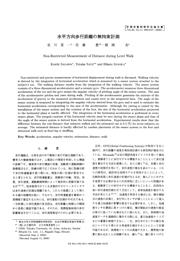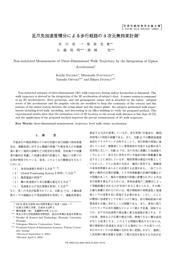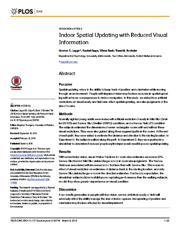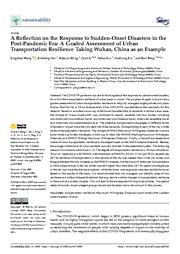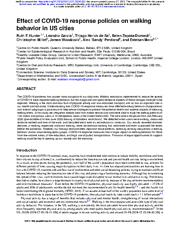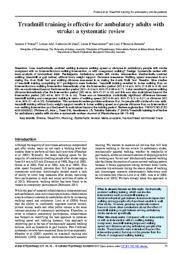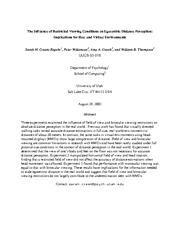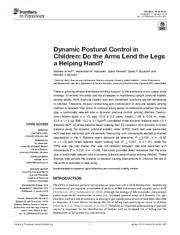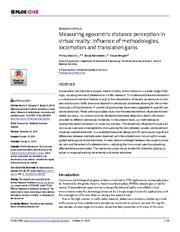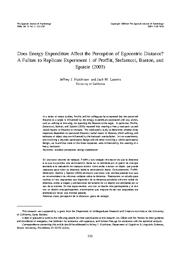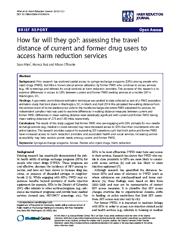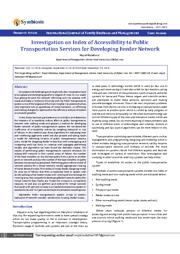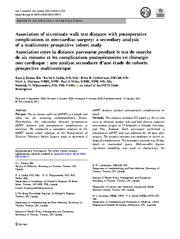A copy of this work was available on the public web and has been preserved in the Wayback Machine. The capture dates from 2019; you can also visit the original URL.
The file type is application/pdf.
Filters
Non-Restricted Measurement of Distance during Level Walk
水平方向歩行距離の無拘束計測
2000
Transactions of the Society of Instrument and Control Engineers
水平方向歩行距離の無拘束計測
Fig.Fig. 10 10 Time trajectories of walking distance during walk at normal speed, slow speed and fast speed ...
doi:10.9746/sicetr1965.36.909
fatcat:xghmuclazfh33idai6dnx64qeu
Non-restricted Measurement of Three-Dimensional Walk Trajectory by the Integration of Tiptoe Acceleration
足爪先加速度積分による歩行経路の3次元無拘束計測
2004
Transactions of the Society of Instrument and Control Engineers
足爪先加速度積分による歩行経路の3次元無拘束計測
Non-restricted estimate of three-dimensional (3D) walk trajectory during indoor locomotion is discussed. The walk trajectory is derived by the integration of the 3D acceleration of subject's foot. ...
The experimental results show that the estimation error of 3D location to the actual walk distance is less than 10 [%] and the application of the proposed method improves the precise measurement of 3D ...
1 ) 1 Eiji Ino-Oka, Kohichi Sagawa, Takayuki Takahashi, Hikaru Inooka, Yoshiharu Kutsuwa and Showko Umeda: Efficacy of Anti-anginal Drugs in the Treatment of Angina Pectoris Associated with Silent Myocardial ...
doi:10.9746/sicetr1965.40.635
fatcat:6unhlez2fzfjbe4uvepiqr4qsm
Indoor Spatial Updating with Reduced Visual Information
2016
PLoS ONE
At the end of each path, they were asked to estimate the distance and direction to the starting location. In Experiment 1, the subjects walked along the path. ...
There was no effect of visual restriction on estimates of distance back to the starting location, and only Severe Blur yielded larger errors in the direction estimates. ...
Acknowledgments We thank Muzi Chen for help with testing our subjects, and Christina Granquist and Paymon Rafian for help with measurement and trigonometry of the three-segment paths. ...
doi:10.1371/journal.pone.0150708
pmid:26943674
pmcid:PMC4778963
fatcat:atacifqgpzfglacr4nv3ymrn4i
A Reflection on the Response to Sudden-Onset Disasters in the Post-Pandemic Era: A Graded Assessment of Urban Transportation Resilience Taking Wuhan, China as an Example
2022
Sustainability
The concept of MWD (Maximum Willingness Distance) in active travel mode was further developed, which was divided into WMWD (Walking Maximum Willingness Distance) and RMWD (Riding Maximum Willingness Distance ...
conventional travel, non-motorized over-distance travel, motorized adaptable travel and motorized non-substitutable travel. ...
Conflicts of Interest: The authors declare no conflict of interest. ...
doi:10.3390/su141710957
fatcat:4ledykxhwvef5ml43hh5dueizy
Effect of COVID-19 response policies on walking behavior in US cities
[article]
2020
medRxiv
pre-print
We detected when users were walking, measured distance walked and time of the walk, and classified each walk as recreational or utilitarian. ...
Walking is the most common form of physical activity and non-motorized transport, and so has an important role in our health and economy. ...
Acknowledgements We would like to thank Cuebiq for allowing the use of anonymized data through their COVID19 Collaborative program. ...
doi:10.1101/2020.12.07.20245282
fatcat:2bdwz4tunvhopjpj35iycdwxdq
The Relationship Between Prescription Medication Use and Ability to Ambulate Distances After Spinal Cord Injury
2011
Archives of Physical Medicine and Rehabilitation
Main Outcomes Measures-A questionnaire measured prescription medication use, ambulation distance, and other demographic data. ...
A composite score of four 10-point scales from the Brief Pain Inventory was used to measure pain severity. ...
Institutes of Health, grant number 1R01 NS 48117. ...
doi:10.1016/j.apmr.2011.03.006
pmid:21807143
pmcid:PMC3149790
fatcat:l2a7kgjax5e6bforqghworrbae
Treadmill training is effective for ambulatory adults with stroke: a systematic review
2013
Journal of Physiotherapy
Outcome measures: Walking speed measured in m/s during the 10-m Walk Test and walking distance measured in m during the 6-min Walk Test. ...
Question: Does mechanically assisted walking increase walking speed or distance in ambulatory people with stroke compared with no intervention/non-walking intervention, or with overground walking? ...
Correspondence: Professor Louise Ada, Discipline of Physiotherapy, Faculty of Health Sciences, The University of Sydney, Australia. Email: louise.ada@sydney.edu.au ...
doi:10.1016/s1836-9553(13)70159-0
pmid:23663792
fatcat:gvvmpayesza53ftaz4biqzr4lu
The Influence of Restricted Viewing Conditions on Egocentric Distance Perception: Implications for Real and Virtual Indoor Environments
2005
Perception
Previous work has found that visually directed walking tasks reveal accurate distance estimations in full-cue, real world environments to distances of about 20 meters. ...
Three experiments examined the influence of field of view and binocular viewing restrictions on absolute distance perception in the real world. ...
The distance walked from the starting position to the participant's stopping position was measured. ...
doi:10.1068/p5144
pmid:15832569
fatcat:3bjpn3gwxre7hkjexgywth5qxa
Dynamic Postural Control in Children: Do the Arms Lend the Legs a Helping Hand?
2019
Frontiers in Physiology
Restricting arm movements elicited a marked degradation in the Y Balance reach distance (all directions, P ≤ 0.001, d = -0.85 to -1.13) and timed balance beam walking test (P ≤ 0.001, d = 1.01), while ...
Each test was performed with free and restricted arm movement. ...
Maximal reach distance was measured by reading the tape measure at the edge of the reach indicator, reflecting the point where the most distal part of the foot reached. ...
doi:10.3389/fphys.2018.01932
pmid:30705636
pmcid:PMC6345241
fatcat:aaszoblnrzaizp5waq6c3qvsse
The Determinants of Walking Behavior before and during COVID-19 in Middle-East and North Africa: Evidence from Tabriz, Iran
2022
Sustainability
However, p. distance to groceries and malls and the p. existence of sidewalks did not correlate with non-commute walking during COVID-19. ...
It was proposed that tremendous changes have occurred on predictors of physical activity in general and walking behavior in particular for three types of walking, including commute, non-commute, and social ...
The obtained results demonstrate the consistency of our study’s objective and subjective measures regarding non-commute walking. ...
doi:10.3390/su14073923
fatcat:5leo6as3zfcx3ljgjro24z2afu
Measuring egocentric distance perception in virtual reality: Influence of methodologies, locomotion and translation gains
2019
PLoS ONE
The respective influence of visual and non-visual cues was investigated by manipulating the ratio between visually perceived and physically walked distances. ...
A linear relation emerged between the visual-to-physical ratio and the extent of underestimation, indicating that non-visual cues during walking affected distance estimates. ...
A 5x6 two-way repeated measures ANOVA was performed including method (5 levels corresponding to five non-verbal methods) and translation gain/non-walking trials (6 levels: 0.8, 0.9, 1.0, 1.1, 1.2, non-walking ...
doi:10.1371/journal.pone.0224651
pmid:31671138
pmcid:PMC6822760
fatcat:ml23mjombbabzjbegt6ul6kvum
Does Energy Expenditure Affect the Perception of Egocentric Distance? A Failure to Replicate Experiment 1 of Proffitt, Stefanucci, Banton, and Epstein (2003)
2006
The Spanish Journal of Psychology
We conducted a study to determine whether three responses dependent on perceived distance (verbal report of distance, blind walking, and estimates of object size) are influenced by the backpack manipulation ...
In a series of recent studies, Proffitt and his colleagues have reported that the perceived distance to a target is influenced by the energy expenditure associated with any action, such as walking or throwing ...
Non-action based measures include verbal report of perceived distance, an estimate of perceived distance derived from distal size judgments by way of size-distance invariance (e.g., Gogel, Loomis, Newman ...
doi:10.1017/s1138741600006235
fatcat:wpgx2qt2jjeqjakn5dcvmozkdq
How far will they go?: assessing the travel distance of current and former drug users to access harm reduction services
2015
Harm Reduction Journal
An independent samples t-test was used to examine differences in walking distance measures between current and former PWID. ...
Differences in mean walking distance were statistically significant with current and former PWID having mean walking distances of 2.75 and 1.80 miles, respectively. ...
HIV prevention for PWID in the District of Columbia. ...
doi:10.1186/s12954-015-0043-4
pmid:25889589
pmcid:PMC4353450
fatcat:buftxiyh2bcohm2vk5jocpshr4
Investigation on Index of Accessibility to Public Transportation Services for Developing Feeder Network
2018
International Journal of Family Business and Management
In this thesis has been paid attention to introduce and determine the measure of accessibility indices affect to public transportation network with walking mode and present a method for developing feeder ...
The results of routes feeder designing model for area ten of Tehran that from accessibility level to system with slowly walking is four feeder routes with covering all elected stops for covering area. ...
Types of modalities for access to the public transportation system Methods of public transportation systems divided into fields of walking mode and non-walking mode which are indicated below: • Non-walking ...
doi:10.15226/2577-7815/3/1/00120
fatcat:lerxfzo5ozc6boxpdh5cb6unve
Association of six-minute walk test distance with postoperative complications in non-cardiac surgery: a secondary analysis of a multicentre prospective cohort study
Association entre la distance parcourue pendant le test de marche de six minutes et les complications postopératoires en chirurgie non cardiaque : une analyse secondaire d'une étude de cohorte prospective multicentrique
2021
Canadian Journal of Anesthesia
Association entre la distance parcourue pendant le test de marche de six minutes et les complications postopératoires en chirurgie non cardiaque : une analyse secondaire d'une étude de cohorte prospective multicentrique
We conducted a secondary analysis of the 6MWT nested cohort substudy of the Measurement of Exercise Tolerance before Surgery study to determine if 6MWT distance predicts postoperative complications or ...
There was no association of 6MWT distance with myocardial injury or 30-day death (non-linear association; P = 0.49). ...
extrapolated based on a restricted cubic spline function with four knots (to account for non-linear association of 6MWT distance with the outcome)
-minute walk test in non-cardiac surgery
-minute ...
doi:10.1007/s12630-020-01909-9
pmid:33442834
pmcid:PMC7932965
fatcat:pxjuk36swrcyvgtt6eyypkcioy
« Previous
Showing results 1 — 15 out of 216,630 results

